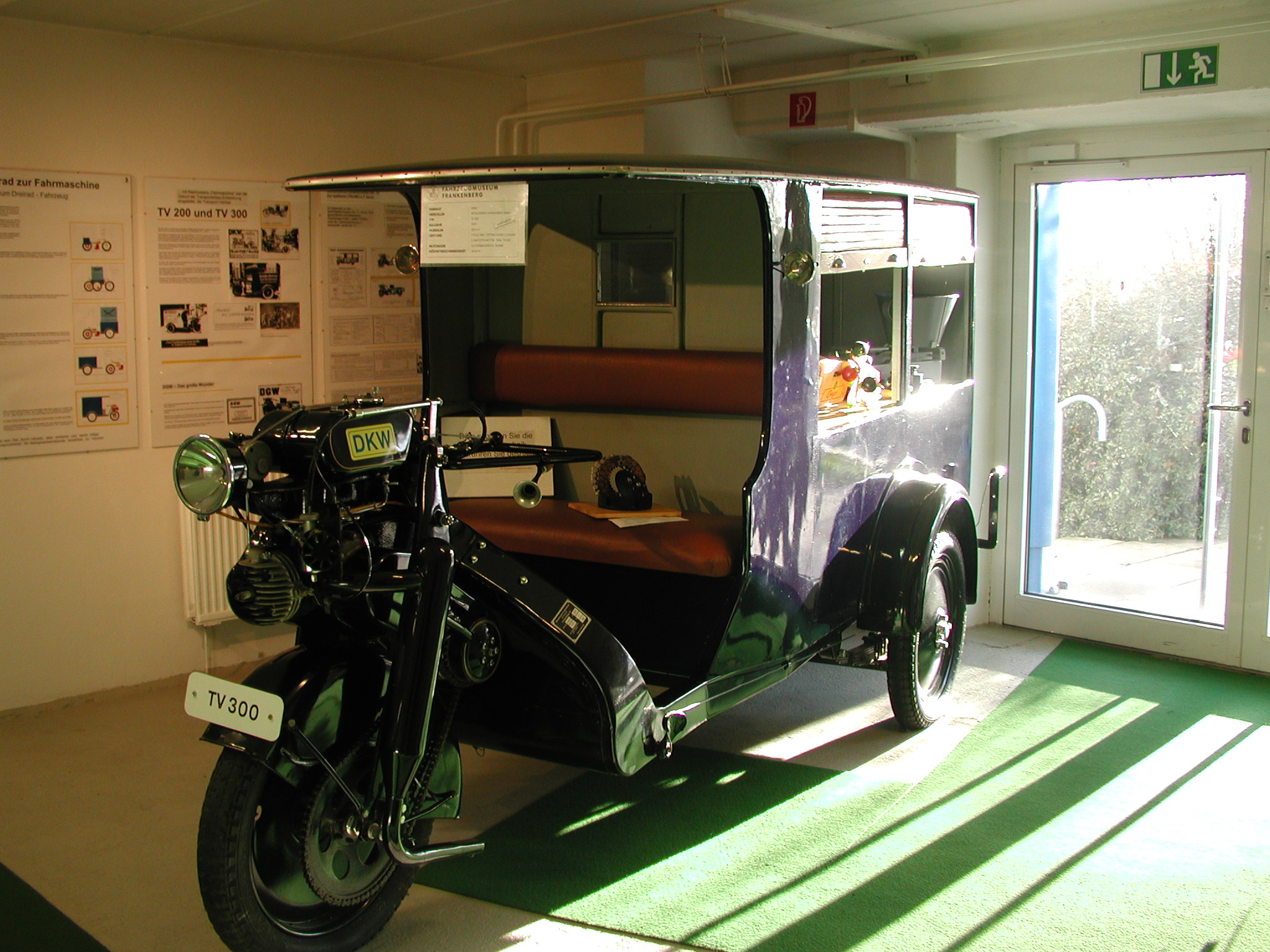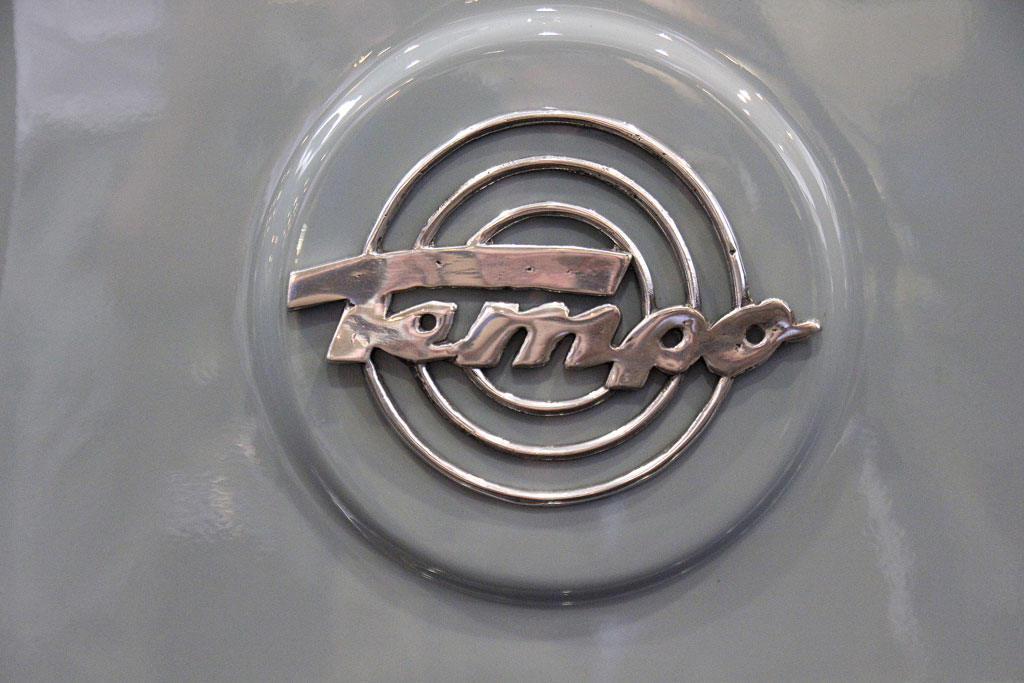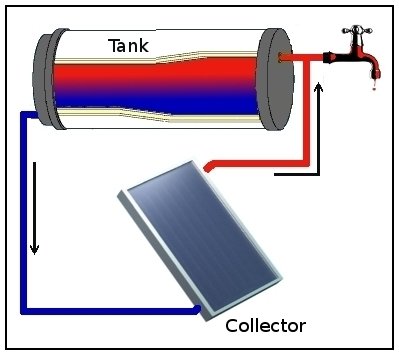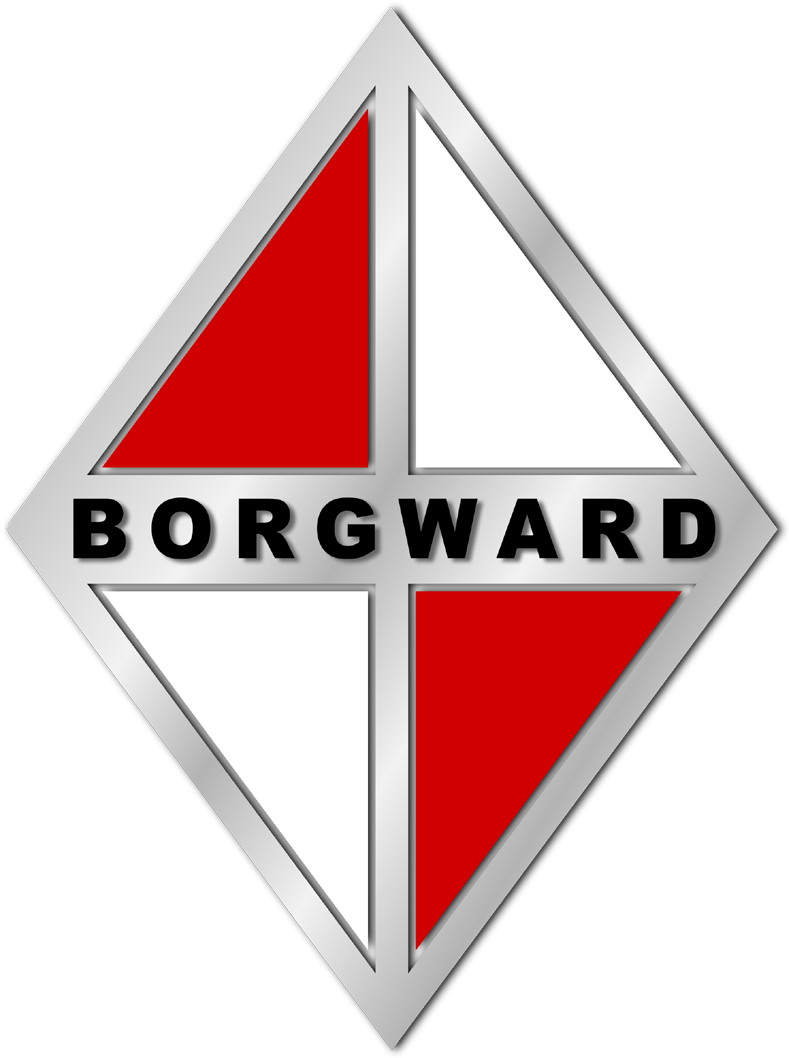|
Goliath F400
The Goliath F400 is a three-wheeled pickup transporter, made by Hansa-Lloyd and Goliath Company Borgward & Tecklenborg in Bremen, Germany which was sold under the brand Goliath. It was based on the three-wheeled passenger car Goliath Pionier with a closed timber-framed wood cab. Unlike the ''Pionier'', a three-wheel microcar, the rear of the F400 a longer box as panel van or a framed flatbed as pickup truck was installed. The rear axle was mounted on leaf springs, and the engine was under the seat. The front wheel was guided on a single swingarm. The body had a reclined front, externally mounted headlights and unlike the Goliath Pionier not a vertical, but a tilted windshield to reduce wind drag. The maximum speed of the "Quick Transport Vehicle" (''Schnelltransporter'') was 30 mph. It was equipped with an air-cooled two-cylinder two-stroke engine with 12 to 13.6 hp reached by a 396 cc engine displacement with a bore 60 mm and stroke 70 mm. The rear wheels were driven by a card ... [...More Info...] [...Related Items...] OR: [Wikipedia] [Google] [Baidu] |
Goliath (company)
Goliath-Werke Borgward & Co. was a German car manufacturer started by Carl F. W. Borgward and Wilhelm Tecklenborg in 1928, and was part of the Borgward group. Goliath was based in Bremen and specialized in three-wheeler cars and trucks and medium-sized cars. Their vehicles were sold under the Goliath brand. Early history The first models were three-wheeler trucks derived from the motorcycle based ''Blitzkarren'', ''Goliath Rapid'', and ''Standard'' previously built by Borgward. In 1926 appeared the Goliath K1 four-wheeler freight truck with open cab, followed by the 1929 Goliath Express, and with closed driver cab the 1932 Goliath Atlas, also sold as Hansa-Lloyd Atlas. The first passenger car was the ''Goliath Pionier'' in 1931, which still had three wheels and a one-cylinder engine. Until 1934, 4,000 of these small cars were produced in various types of body. In 1933, ''Goliath F200 and F400'' three-wheeler trucks derived were derived from ''Goliath Pionier''. The ''Pionier' ... [...More Info...] [...Related Items...] OR: [Wikipedia] [Google] [Baidu] |
Engine Displacement
Engine displacement is the measure of the cylinder volume swept by all of the pistons of a piston engine, excluding the combustion chambers. It is commonly used as an expression of an engine's size, and by extension as a loose indicator of the power an engine might be capable of producing and the amount of fuel it should be expected to consume. For this reason displacement is one of the measures often used in advertising, as well as regulating, motor vehicles. It is usually expressed using the metric units of cubic centimetres (cc or cm3, equivalent to millilitres) or litres (l or L), orparticularly in the United States cubic inches (CID, cu in, or in3). Definition The overall displacement for a typical reciprocating piston engine is calculated by multiplying together three values; the distance travelled by the piston (the stroke length), the circular area of the cylinder, and the number of cylinders in the whole engine. The formula is: : \text = \text \times \frac \times ... [...More Info...] [...Related Items...] OR: [Wikipedia] [Google] [Baidu] |
Goliath Vehicles
Goliath ( ) ''Goləyāṯ''; ar, جُليات ''Ǧulyāt'' (Christian term) or (Quranic term). is a character in the Book of Samuel, described as a Philistine giant defeated by the young David in single combat. The story signified King Saul's unfitness to rule, as Saul himself should have fought for Israel. Scholars today believe that the original listed killer of Goliath was Elhanan, son of Jair, and that the authors of the Deuteronomic history changed the original text to credit the victory to the more famous character David. The phrase "David and Goliath" has taken on a more popular meaning denoting an underdog situation, a contest wherein a smaller, weaker opponent faces a much bigger, stronger adversary. "used to describe a situation in which a small or weak person or organization tries to defeat another much larger or stronger opponent: ''The game looks like it will be a David and Goliath contest.''" Biblical account The Goliath narrative in 1 Samuel 17 Saul and the ... [...More Info...] [...Related Items...] OR: [Wikipedia] [Google] [Baidu] |
Piaggio Ape
The Piaggio Ape (; is ), initially marketed as VespaCar or TriVespa, is a three-wheeled light commercial vehicle, manufactured and marketed by Piaggio as an adaption of the company's Vespa scooter ( being Italian for 'wasp' instead). It is in continuous production since its 1948 introduction and offered in numerous body configurations, serving a range of utilitarian functions. History and design After World War II, Italians could not afford personal transportation. In 1947, aircraft designer Corradino D'Ascanio conceived a light and simple three-wheeled commercial vehicle, which found favor with Piaggio. The first model was a cabless adaptation of the company's two-wheel scooter, the Vespa, adding two rear wheels and a flat utility bed over the rear axle. Initial models featured 50 cc, 125 cc or 150 cc engines and, later, a 175 cc engine. By the time of the 1964 Ape D, a cab was added to protect the driver from the elements. With handlebar steering ... [...More Info...] [...Related Items...] OR: [Wikipedia] [Google] [Baidu] |
Standard E1
The Standard E1 was a motorized freight tricycle, produced from 1939 to 1945 by the Standard vehicle factory of Wilhelm Gutbrod, Germany. It was an identical construction of the Tempo E 400 by Tempowerk Vidal & Sohn, built from 1938 to 1948, the design was taken as Hitler's "Standard Three-wheeler Delivery Van" (Einheits-Dreirad-Lieferwagen). It had a simple chain drive from gearbox and engine to the front wheel below. This simple construction with a lifted center of gravity was less stable when cornering. So far former vehicle designs by Gutbrod had the engine and gearbox located behind the rear axle as an underfloor engine. During World War II, manufacturers were obliged by the Nazi regime dictatorship to produce weapons and accessories as well as military equipment for the war. Only a few manufacturers were allowed to continue production of civil vehicles. It was the last freight tricycle built by Gutbrod.* Christoph Bauer''Drive it! – Three-wheeled History: The Goliath F ... [...More Info...] [...Related Items...] OR: [Wikipedia] [Google] [Baidu] |
Gutbrod
Gutbrod was a German manufacturer of cars, motorcycles and small agricultural machinery. The firm was founded in Ludwigsburg, Germany by Wilhelm Gutbrod in 1926. It originally built "Standard" branded motorcycles. In 1933 the company relocated to the nearby Stuttgart suburb of Feuerbach, and from 1933 to 1935, Standard Superior cars were built with rear-mounted engines. An updated version of the Gutbrod Superior introduced in 1953 benefited from developments towards fuel injection undertaken by Mercedes-Benz dating initially from 1935: this Gutbrod was the first car in the world to be offered with fuel injection, some three years before fuel injection appeared in a production engine offered by Mercedes themselves. The small Gutbrod Superior model was produced from 1950 to 1954 using the company's own, front-mounted twin-cylinder two-stroke engines initially of 593cc. In April 1953 the engine size was increased to 663 cc for more expensive 'Luxus 700' versions of the ca ... [...More Info...] [...Related Items...] OR: [Wikipedia] [Google] [Baidu] |
Standard P203
The ''Standard P503'' was a three-wheeler light freight truck, produced from 1935 to 1939 by Wilhelm Gutbrods Standard Werkzeugfabrik, (Standard tooling company) Germany. The reason to offer the same model P203 with the downsized 200 cc engine was to meet the legal permit of license free drivers and the vehicles exception from tax that time. Competitors also offered 200 cc engine version of their vehicles. The four wheel variant was the "Standard P504", also a 200 cc engined version was marketed as "Standard P204". Unique under the competitors the four variants of "Eillieferwagen" (express delivery vehicle) had the rear under floor or flatbed placed two stroke engine, 200 cc as single cylinder or a 500 cc two cylinder boxer-engine.https://books.google.de/books?id=8mBVAAAAYAAJ&PA=59 ATZ, Automobiltechnische Zeitschrift, Band 64 Franck., 1962, p. 59 Vehicle variations with the 500 cc allowed for a payload of 0,75 metric tons, and variations with the 200 cc engine 0,5 metric tons. ... [...More Info...] [...Related Items...] OR: [Wikipedia] [Google] [Baidu] |
Framo (car)
Framo was a minivan, motor tricycle and car manufacturer in Saxony, Germany. It was established by Danish engineer Jørgen Skafte Rasmussen, the founder of DKW, in 1923. Framo became the core of the Barkas minivan manufacturer in 1957. Formation Framo was founded by the Danish engineer Jørgen Skafte Rasmussen and two colleagues (Paul Figura, and Richard Blau) as a components supplier in 1923. At this time, the company was called ''Metall-Werke Frankenberg GmbH'' and located in Frankenberg, Saxony. Rasmussen had earlier founded DKW, and the Framo factory was created to produce components for DKW motorcycles. Rasmussen played an important role in the establishment of the Auto Union group, and DKW is represented by one ring of the four rings of the Audi brand today. The production of a motorized freight trike (''TV 300'') started in Frankenberg in 1927. The idea was to combine a motorcycle with a cargo area. The tricycles were equipped with a one-cylinder-two-stroke engine made b ... [...More Info...] [...Related Items...] OR: [Wikipedia] [Google] [Baidu] |
Tempo (automobile)
Tempo (also known as Vidal & Sohn Tempo-Werke GmbH), was a German automobile manufacturer based in Hamburg. The company was founded by Oscar Vidal in 1924. The company was well known in Germany, producing popular vans like the Matador and the Hanseat. Tempo also produced small military vehicles during the 1930s and 1940s. History Tempo was founded as Vidal & Sohn Tempo-Werke in 1924. During the 1940s, Tempo produced small military vehicles. Post-war the requirement of the Bundesgrenzschutz, in West Germany, to acquire a suitable vehicle for Border patrol led to production of the 80" and 86" Tempo from 1953 to 1957. The Tempo 80" and 86" were built using a rolling chassis from Land Rover, but attempts to continue production with the 88" and 109" models were not successful. In 1958, Firodia Ltd, an Indian manufacturer of cars (later acquired by Bajaj Tempo, renamed since 2005 to Force Motors), started the production of Hanseat three-wheeled cars with the collaboration of Tempo ... [...More Info...] [...Related Items...] OR: [Wikipedia] [Google] [Baidu] |
Fender (vehicle)
Fender is the American English term for the part of an automobile, motorcycle or other vehicle body that frames a wheel well (the fender underside). Its primary purpose is to prevent sand, mud, rocks, liquids, and other road spray from being thrown into the air by the rotating tire. Fenders are typically rigid and can be damaged by contact with the road surface. Sticky materials, such as mud, may adhere to the smooth outer tire surface, while smooth loose objects, such as stones, can become temporarily embedded in the tread grooves as the tire rolls over the ground. These materials can be ejected from the surface of the tire at high velocity as the tire imparts kinetic energy to the attached objects. For a vehicle moving forward, the top of the tire is rotating upward and forward, and can throw objects into the air at other vehicles or pedestrians in front of the vehicle. In British English, the fender is called the wing. (This may refer to either the front or rear fenders. Ho ... [...More Info...] [...Related Items...] OR: [Wikipedia] [Google] [Baidu] |
Thermosiphon
Thermosiphon (or thermosyphon) is a method of passive heat exchange, based on natural convection, which circulates a fluid without the necessity of a mechanical pump. Thermosiphoning is used for circulation of liquids and volatile gases in heating and cooling applications such as heat pumps, water heaters, boilers and furnaces. Thermosiphoning also occurs across air temperature gradients such as those utilized in a wood fire chimney or solar chimney. This circulation can either be open-loop, as when the substance in a holding tank is passed in one direction via a heated transfer tube mounted at the bottom of the tank to a distribution point—even one mounted above the originating tank—or it can be a vertical closed-loop circuit with return to the original container. Its purpose is to simplify the transfer of liquid or gas while avoiding the cost and complexity of a conventional pump. Simple thermosiphon Natural convection of the liquid starts when heat transfer to the liquid ... [...More Info...] [...Related Items...] OR: [Wikipedia] [Google] [Baidu] |
Borgward FW 200, 199 Cm³, Bj
The former Borgward car manufacturing company, based in Bremen, Germany, was founded by Carl F. W. Borgward (1890–1963). It produced cars of four brands, which were sold to a diversified international customer base: Borgward, Hansa, Goliath and Lloyd. Borgward's Isabella was one of the most popular German premium models in the 1950s, while Lloyd's Alexander / Lloyd 600 model offered affordable mobility to many working-class motorists. The group ceased operations in 1961, following controversial insolvency proceedings. The brand was revived in the 21st century, with the Stuttgart-based Borgward Group AG designing and marketing cars manufactured in China. Origins of the component companies The origins of the company go back to 1905 with the establishment in Varel (near Bremen) of Hansa Automobilgesellschaft and the foundation in Bremen itself of NAMAG, maker of the Lloyd car. These two businesses merged in 1914 to form the "Hansa-Lloyd-Werke A.G." After the war, in ... [...More Info...] [...Related Items...] OR: [Wikipedia] [Google] [Baidu] |

.jpg)


.jpg)



